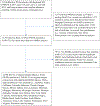HIV Care Outcomes in Relation to Racial Redlining and Structural Factors Affecting Medical Care Access Among Black and White Persons with Diagnosed HIV-United States, 2017
- PMID: 35277807
- PMCID: PMC10428000
- DOI: 10.1007/s10461-022-03641-5
HIV Care Outcomes in Relation to Racial Redlining and Structural Factors Affecting Medical Care Access Among Black and White Persons with Diagnosed HIV-United States, 2017
Abstract
Black/African American (Black) versus White persons are unequally burdened by human immunodeficiency virus (HIV) in the United States. Structural factors can influence social determinants of health, key components in reducing HIV-related health inequality by race. This analysis examined HIV care outcomes among Black and White persons with diagnosed HIV (PWDH) in relation to three structural factors: racial redlining, Medicaid expansion, and Ryan White HIV/AIDS Program (RWHAP) use. Using National HIV Surveillance System, U.S. Census, and Home Mortgage Disclosure Act data, we examined linkage to HIV care and viral suppression (i.e., viral load < 200 copies/mL) in relation to the structural factors among 12,996 Black and White PWDH with HIV diagnosed in 2017/alive at year-end 2018, aged ≥ 18 years, and residing in 38 U.S. jurisdictions with complete laboratory data, geocoding, and census tract-level redlining indexes. Compared to White PWDH, a lower proportion of Black PWDH were linked to HIV care within 1 month after diagnosis and were virally suppressed in 2018. Redlining was not associated with the HIV care outcomes. A higher prevalence of PWDH residing (v. not residing) in states with Medicaid expansion were linked to HIV care ≤ 1 month after diagnosis. A higher prevalence of those residing (v. not residing) in states with > 50% of PWDH in RWHAP had viral suppression. Direct exposure to redlining was not associated with poor HIV care outcomes. Structural factors that reduce the financial burden of HIV care and improve care access like Medicaid expansion and RWHAP might improve HIV care outcomes of PWDH.
Keywords: AIDS; HIV; Medicaid expansion; Redlining; Ryan white program; Social determinants of health.
© 2022. This is a U.S. government work and not under copyright protection in the U.S.; foreign copyright protection may apply.
Conflict of interest statement
Figures


Similar articles
-
HIV-related outcome disparities between transgender women living with HIV and cisgender people living with HIV served by the Health Resources and Services Administration's Ryan White HIV/AIDS Program: A retrospective study.PLoS Med. 2020 May 28;17(5):e1003125. doi: 10.1371/journal.pmed.1003125. eCollection 2020 May. PLoS Med. 2020. PMID: 32463815 Free PMC article.
-
The associations of income and Black-White racial segregation with HIV outcomes among adults aged ≥18 years-United States and Puerto Rico, 2019.PLoS One. 2023 Sep 18;18(9):e0291304. doi: 10.1371/journal.pone.0291304. eCollection 2023. PLoS One. 2023. PMID: 37721938 Free PMC article.
-
Contemporary neighborhood redlining and racial mortgage lending bias and disparities in prostate cancer survival.Cancer. 2025 Apr 15;131(8):e35850. doi: 10.1002/cncr.35850. Cancer. 2025. PMID: 40233138
-
A Census Tract-Level Examination of HIV Care Outcomes and Social Vulnerability Among Black/African American, Hispanic/Latino, and White Adults in the Southern United States, 2018.J Community Health. 2023 Aug;48(4):616-633. doi: 10.1007/s10900-023-01191-y. Epub 2023 Feb 24. J Community Health. 2023. PMID: 36823280 Free PMC article.
-
Service Delivery and Patient Outcomes in Ryan White HIV/AIDS Program-Funded and -Nonfunded Health Care Facilities in the United States.JAMA Intern Med. 2015 Oct;175(10):1650-9. doi: 10.1001/jamainternmed.2015.4095. JAMA Intern Med. 2015. PMID: 26322677 Free PMC article.
Cited by
-
Connecting Past to Present: Does Historical Redlining Affect Current Life Expectancy?J Racial Ethn Health Disparities. 2024 Oct 28. doi: 10.1007/s40615-024-02220-9. Online ahead of print. J Racial Ethn Health Disparities. 2024. PMID: 39466535
-
Structural equation model of intersectional microaggressions, discrimination, resilience, and mental health among black women with hiv.Health Psychol. 2023 May;42(5):299-313. doi: 10.1037/hea0001275. Health Psychol. 2023. PMID: 37141016 Free PMC article.
-
Methodologic Strategies for Quantifying Associations of Historical and Contemporary Mortgage Discrimination on Population Health Equity: A Systematic Review.J Racial Ethn Health Disparities. 2024 Sep 17. doi: 10.1007/s40615-024-02137-3. Online ahead of print. J Racial Ethn Health Disparities. 2024. PMID: 39289334 Review.
-
Redlining and Time to Viral Suppression Among Persons With HIV.JAMA Intern Med. 2024 Nov 1;184(11):1329-1337. doi: 10.1001/jamainternmed.2024.5003. JAMA Intern Med. 2024. PMID: 39348107
References
-
- Centers for Disease Control and Prevention. Estimated HIV incidence and prevalence in the United States, 2014–2018. HIV Surveillance Supplemental Report 2020;25(No. 1). https://www.cdc.gov/hiv/pdf/library/reports/surveillance/cdc-hiv-surveil.... Accessed 23 Sept 2020.
-
- Centers for Disease Control and Prevention. Monitoring selected national HIV prevention and care objectives by using HIV surveillance data—United States and 6 dependent areas, 2018. HIV Surveillance Supplemental Report 2020;25(No. 2). https://www.cdc.gov/hiv/pdf/library/reports/surveillance/cdc-hiv-surveil.... Accessed 23 Sept 2020.
-
- U.S. Department of Health and Human Services. Ending the HIV Epidemic: A Plan for America. https://www.hiv.gov/federal-response/ending-the-hiv-epidemic/overview. Accessed 23 Sept 2020.
MeSH terms
Grants and funding
LinkOut - more resources
Full Text Sources
Medical

